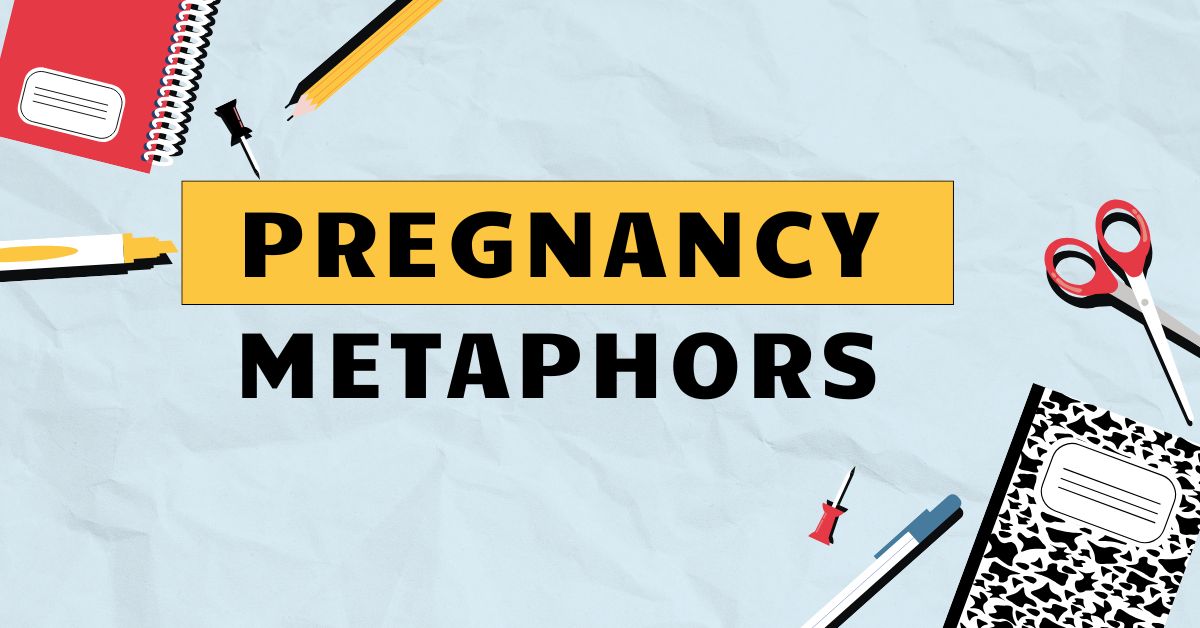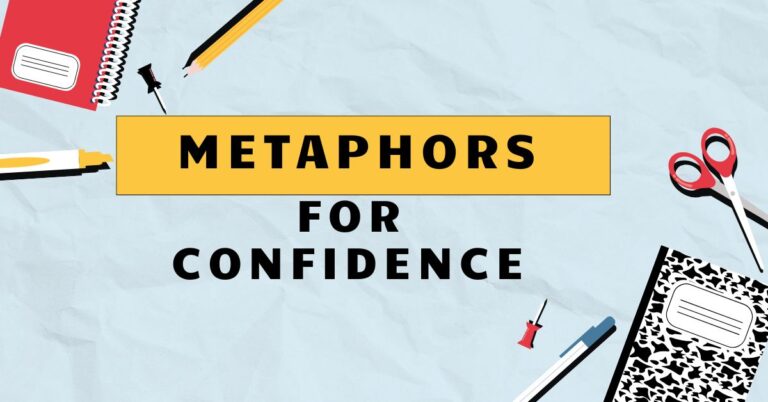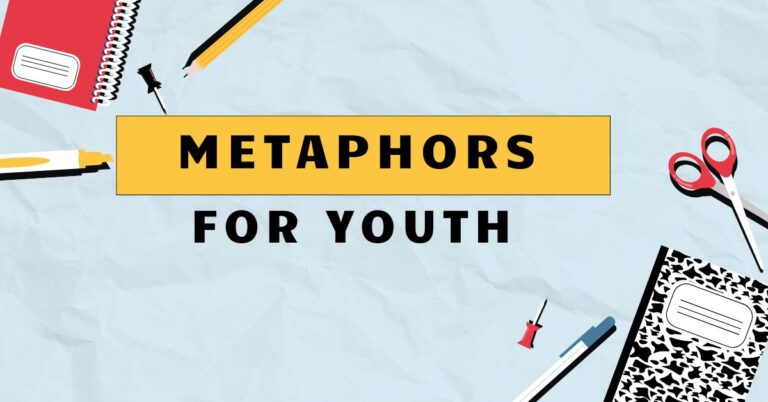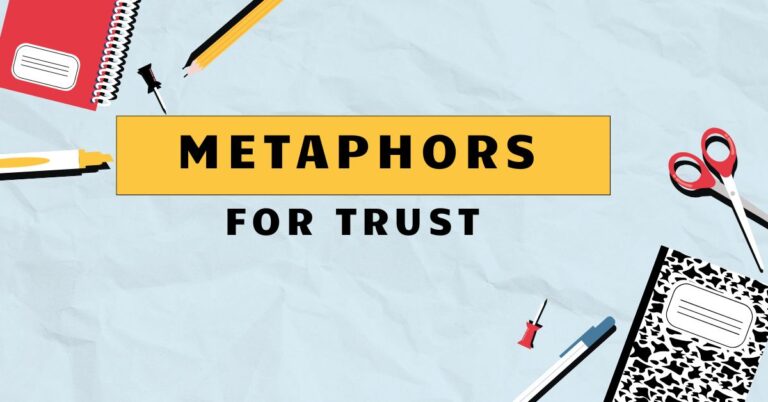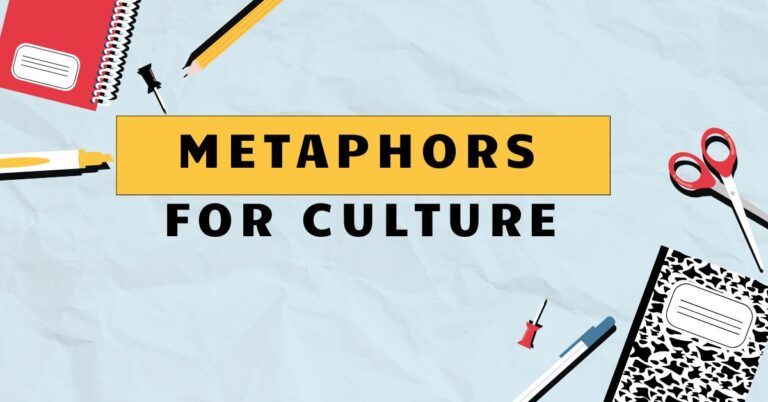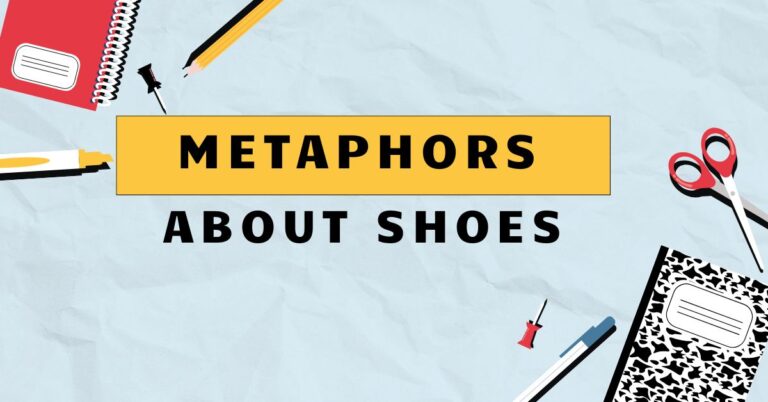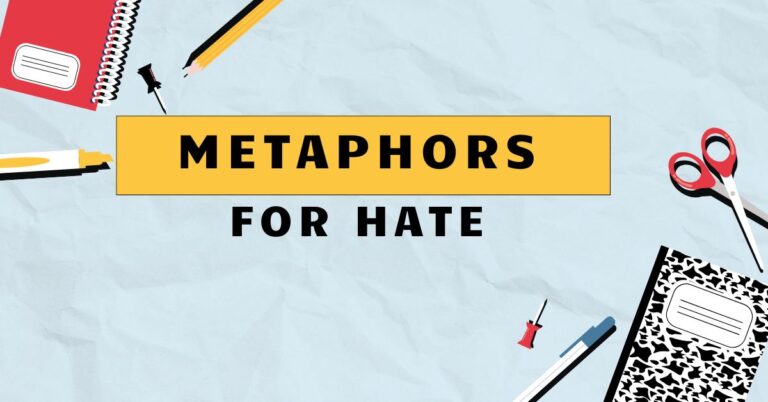47 Pregnancy Metaphors: Exploring Figurative Language
Pregnancy is a profound and transformative experience, often described using vivid and imaginative language. Metaphors provide a powerful way to capture the complex emotions, physical changes, and anticipation associated with bringing new life into the world.
Understanding these metaphors not only enriches our comprehension of the pregnancy journey but also highlights the creative and nuanced nature of English. This article will explore various types of metaphors used to describe pregnancy, their meanings, and how they contribute to our understanding of this significant life event.
This guide is suitable for English language learners, writers, and anyone interested in the art of figurative language.
Table of Contents
- Introduction
- Definition of Metaphor
- Structural Breakdown of Pregnancy Metaphors
- Types of Pregnancy Metaphors
- Examples of Pregnancy Metaphors
- Usage Rules for Pregnancy Metaphors
- Common Mistakes with Pregnancy Metaphors
- Practice Exercises
- Advanced Topics in Pregnancy Metaphors
- Frequently Asked Questions
- Conclusion
Definition of Metaphor
A metaphor is a figure of speech that directly compares two unrelated things, asserting that one thingisanother. Unlike similes, which use words like “like” or “as” to make a comparison, metaphors create a direct equivalence.
The purpose of a metaphor is to illustrate a quality or characteristic of one thing by associating it with something else, often in a surprising or insightful way. Metaphors are essential for creating vivid imagery and conveying complex ideas in a concise manner.
They are used extensively in literature, poetry, and everyday language to add depth and nuance to communication.
In the context of pregnancy, metaphors are used to describe the physical and emotional changes a woman experiences, the development of the baby, and the overall journey of bringing new life into the world. These metaphors often draw upon imagery from nature, travel, and personal transformation to convey the magnitude and significance of the pregnancy experience.
By using metaphors, we can better understand and appreciate the profound changes that occur during this special time.
Structural Breakdown of Pregnancy Metaphors
Pregnancy metaphors, like all metaphors, consist of two main components: thetenorand thevehicle. Thetenoris the subject being described (in this case, pregnancy or aspects of it), and thevehicleis the object or concept used to describe the tenor.
The connection between the tenor and vehicle is based on shared characteristics or qualities that the speaker or writer wants to emphasize.
For example, in the metaphor “She is blossoming with new life,” the tenor is the pregnant woman (or her condition), and the vehicle is “blossoming.” The shared characteristic is growth and development, suggesting that the woman is undergoing a period of flourishing and transformation similar to a flower. Understanding the tenor and vehicle helps to decipher the meaning and impact of the metaphor.
The effectiveness of a pregnancy metaphor often depends on how well the vehicle resonates with the audience and how clearly it conveys the intended meaning. A well-chosen vehicle can evoke strong emotions and create a deeper understanding of the pregnancy experience.
Conversely, a poorly chosen vehicle can be confusing or ineffective. The context in which the metaphor is used also plays a crucial role in its interpretation.
Types of Pregnancy Metaphors
Pregnancy metaphors can be categorized based on the aspects of pregnancy they emphasize. Here are some common types:
Growth and Development Metaphors
These metaphors focus on the physical growth of the baby and the mother’s changing body. They often use imagery of budding, ripening, and expanding.
Examples include “a seed of life,” “growing a little human,” and “swelling with anticipation.” These metaphors highlight the miracle of life and the natural processes of growth and development.
Transformation Metaphors
These metaphors emphasize the profound personal changes that a woman undergoes during pregnancy. They often use imagery of metamorphosis, rebirth, and renewal.
Examples include “becoming a mother,” “shedding her old skin,” and “a chrysalis of change.” These metaphors capture the emotional and psychological journey of becoming a parent.
Journey Metaphors
These metaphors portray pregnancy as a journey with its own set of challenges, milestones, and destinations. They often use imagery of travel, exploration, and adventure.
Examples include “the road to motherhood,” “navigating the first trimester,” and “embarking on a new chapter.” These metaphors emphasize the long and sometimes arduous path of pregnancy and childbirth.
Container Metaphors
These metaphors describe the mother’s body as a vessel or container holding the developing baby. They often use imagery of cradles, nests, and safe havens.
Examples include “a womb of comfort,” “carrying a precious cargo,” and “a living incubator.” These metaphors highlight the protective and nurturing role of the mother’s body.
Nature Metaphors
These metaphors draw upon elements of the natural world to describe pregnancy and childbirth. They often use imagery of seasons, plants, and animals.
Examples include “the spring of new life,” “nesting instincts,” and “blooming into motherhood.” These metaphors emphasize the connection between pregnancy and the natural cycles of life.
Examples of Pregnancy Metaphors
The following tables provide examples of each type of pregnancy metaphor, illustrating their usage and meaning.
Growth and Development Examples
This table illustrates the use of Growth and Development metaphors in the context of pregnancy. These metaphors emphasize the physical and emotional expansion associated with pregnancy, highlighting the miracle of new life and the changes occurring within the mother and the developing child.
| Metaphor | Meaning |
|---|---|
| She’s a blooming garden. | She is flourishing and full of life, like a garden in full bloom. |
| A seed of hope has been planted. | The pregnancy represents the beginning of something new and promising. |
| Growing a little human inside. | Describes the process of the baby’s physical development. |
| Swelling with anticipation. | Her body is changing as she eagerly awaits the baby’s arrival. |
| Her belly is a ripening fruit. | Her pregnancy is progressing towards its natural conclusion. |
| The baby is sprouting like a beanstalk. | The baby is growing rapidly and steadily. |
| She’s cultivating a new life. | She is nurturing and caring for the developing baby. |
| Her body is expanding with love. | Her physical growth is accompanied by a growing emotional bond. |
| She’s nurturing a tiny sprout. | She’s carefully tending to her growing baby. |
| The baby is blossoming in her womb. | The baby is thriving and developing well. |
| Her womb is a fertile ground. | It is a place where new life can flourish. |
| Each day, the baby buds a little more. | The baby is developing bit by bit each day. |
| She’s swollen with the promise of life. | Her body is full of the potential for new life. |
| Her body is a vessel of growth. | It is facilitating the baby’s development. |
| She’s like a tree bearing fruit. | She is carrying new life and bringing it to fruition. |
| The baby is unfurling petal by petal. | The baby is gradually revealing its unique qualities. |
| She’s growing a miracle. | The development of the baby is extraordinary and wondrous. |
| Her womb is a garden of potential. | It holds the possibility of a bright future. |
| She’s swelling with the joy of new life. | Her physical growth is accompanied by emotional fulfillment. |
| Her body is a testament to growth. | It demonstrates the incredible power of life. |
| The baby is budding with potential. | The baby has the capacity for great things. |
| She feels like a vessel slowly filling with life. | She is aware of the baby growing inside her. |
| Her belly is a globe expanding with a new world. | Her pregnancy opens up a whole new realm of experience. |
| She is expanding with the universe inside her. | She feels a connection to something vast and powerful. |
Transformation Examples
The following table showcases Transformation metaphors, which highlight the profound personal changes a woman experiences during pregnancy. These metaphors capture the emotional and psychological journey of becoming a parent, often using imagery of metamorphosis and rebirth.
| Metaphor | Meaning |
|---|---|
| Becoming a mother is her metamorphosis. | She is undergoing a significant change in her identity. |
| Shedding her old skin, embracing the new. | She is leaving behind her former self and embracing her new role. |
| A chrysalis of change surrounds her. | She is in a period of transformation, like a butterfly in a chrysalis. |
| She’s being reborn as a parent. | She is entering a new phase of life with a new identity. |
| Her identity is reshaping itself. | Her sense of self is changing as she prepares to become a mother. |
| She’s shedding her past like dead leaves. | She is letting go of old habits and patterns. |
| A new chapter is being written in her life. | Her life story is taking a new direction. |
| She feels like she’s been through a crucible. | The experience has tested and refined her. |
| She is emerging anew, stronger and wiser. | She is transformed by the experience. |
| Her world is turning upside down, but in a beautiful way. | She is experiencing a profound shift in perspective. |
| She’s like a phoenix rising from the ashes. | She is being reborn after a period of challenge. |
| She’s finding her wings as a mother. | She is discovering her abilities and strengths. |
| She’s evolving into a new version of herself. | She is growing and developing as a person. |
| She’s reinventing herself as a caregiver. | She is taking on a new role with dedication and love. |
| She’s being molded into the mother she’s meant to be. | She is being shaped by the experience of pregnancy. |
| She feels like a caterpillar turning into a butterfly. | She is undergoing a complete transformation. |
| She’s undergoing a profound inner alchemy. | She is experiencing a deep and mysterious change. |
| She’s being forged in the fires of motherhood. | She is being strengthened and tempered by the challenges. |
| She’s becoming the architect of a new life. | She is creating a new future for herself and her child. |
| She’s like a sculptor shaping a masterpiece. | She is carefully and lovingly creating a new life. |
| She is shedding her old self to embrace motherhood. | She is letting go of her previous identity. |
| Pregnancy is her initiation into a new world. | She is entering a new phase with its own rules and challenges. |
| She’s transcending her former self. | She is moving beyond her previous limitations. |
| She is being reborn through her child. | She is experiencing a renewal of her own life. |
Journey Examples
This table presents Journey metaphors, which portray pregnancy as a journey with its own set of challenges, milestones, and destinations. These metaphors emphasize the long and sometimes arduous path of pregnancy and childbirth, highlighting the anticipation and adventure involved.
| Metaphor | Meaning |
|---|---|
| The road to motherhood is long. | Pregnancy and raising a child is a lengthy and challenging process. |
| Navigating the first trimester’s storms. | The first three months of pregnancy can be difficult and unpredictable. |
| Embarking on a new chapter of her life. | Starting a family represents a significant turning point. |
| She’s charting a course into uncharted waters. | She is venturing into the unknown territory of parenthood. |
| Her pregnancy is a voyage of discovery. | She is learning about herself and her baby along the way. |
| She’s climbing the mountain of motherhood. | She is facing the challenges of pregnancy with determination. |
| She’s sailing into the sunset of her pregnancy. | She is nearing the end of her pregnancy journey. |
| She’s on a pilgrimage to parenthood. | She is undertaking a meaningful and transformative journey. |
| She’s traversing the landscape of pregnancy. | She is experiencing the various phases and challenges of pregnancy. |
| She’s hiking through the wilderness of early motherhood. | She is navigating the unfamiliar and challenging terrain of new motherhood. |
| She’s exploring the uncharted territory of her heart. | She is discovering new depths of love and compassion. |
| She’s crossing the bridge to parenthood. | She is making the transition from being a woman to being a mother. |
| She’s embarking on a grand adventure. | She is starting a new and exciting chapter in her life. |
| She’s setting sail on the sea of motherhood. | She is beginning the journey of raising a child. |
| She’s walking the path of motherhood. | She is following the steps and stages of being a mother. |
| She’s like an explorer mapping new lands. | She is discovering the joys and challenges of parenthood. |
| She’s navigating the labyrinth of pregnancy. | She is finding her way through the complexities of pregnancy. |
| She’s trekking through the terrain of parenthood. | She is enduring the trials and tribulations of raising a child. |
| She’s journeying into the heart of motherhood. | She is experiencing the deepest emotions and connections of being a mother. |
| She’s like a pioneer forging a new trail. | She is breaking new ground and setting an example for others. |
| She’s making her way to the summit of motherhood. | She is reaching the peak of fulfillment and joy. |
| She’s on a quest to bring new life into the world. | She is dedicated to the mission of creating a family. |
| She’s traveling the road less traveled. | She is choosing a unique and unconventional path. |
| She’s reaching the destination of motherhood. | She is arriving at the point of becoming a mother. |
Container Examples
The subsequent table illustrates Container metaphors, which describe the mother’s body as a vessel or container holding the developing baby. These metaphors often use imagery of cradles, nests, and safe havens, highlighting the protective and nurturing role of the mother’s body.
| Metaphor | Meaning |
|---|---|
| Her womb is a safe haven. | It is a secure and protected environment for the baby. |
| Carrying a precious cargo inside. | She is safeguarding something valuable and delicate. |
| Her body is a living incubator. | It is providing the ideal conditions for the baby’s growth. |
| Her belly is a cradle of life. | It is a nurturing and comforting space for the baby. |
| She’s a vessel of new beginnings. | She is carrying the potential for a new life. |
| Her womb is a garden, nurturing a precious seed. | It is a nurturing environment where new life can flourish. |
| She’s the guardian of a tiny universe. | She is responsible for protecting and nurturing the baby. |
| Her body is a sanctuary for new life. | It is a sacred and protected space for the baby. |
| She’s like a treasure chest holding something priceless. | She is safeguarding something incredibly valuable. |
| Her womb is a haven of warmth and safety. | It is a comforting and secure place for the baby. |
| She’s the keeper of a precious secret. | She is protecting the life growing inside her. |
| Her body is a temple of life. | It is a sacred and revered space for the baby. |
| She’s like a fortress protecting her child. | She is safeguarding the baby from harm. |
| Her womb is a cocoon of comfort. | It is a warm and secure place for the baby to grow. |
| She’s the vessel of a miracle. | She is carrying something extraordinary and wondrous. |
| Her body is a haven for new beginnings. | It is a welcoming and nurturing space for the baby. |
| She’s like a safe holding something invaluable. | She is protecting something of immense worth. |
| Her womb is a sanctuary of peace. | It is a calm and serene place for the baby. |
| She is the protector of a fragile dream. | She is safeguarding the hopes and aspirations for her child. |
| Her body is a cradle of hope. | It is a nurturing and promising space for the baby. |
| She’s a vessel filled with love. | Her body is overflowing with affection and care for the baby. |
| Her womb is a nurturing nest. | It is a warm and comfortable environment for the baby to grow. |
| She is a living ark carrying new life. | She is safeguarding the future of her family. |
| Her body is a haven where life blossoms. | It is a place where new beginnings thrive. |
Nature Examples
The table below provides Nature metaphors, which draw upon elements of the natural world to describe pregnancy and childbirth. These metaphors often use imagery of seasons, plants, and animals, emphasizing the connection between pregnancy and the natural cycles of life.
| Metaphor | Meaning |
|---|---|
| The spring of new life is upon her. | She is entering a period of growth and renewal. |
| Her nesting instincts are kicking in. | She is preparing her home for the arrival of the baby. |
| She’s blooming into motherhood. | She is blossoming and thriving as she becomes a mother. |
| She’s like a fertile field ready to yield. | She is prepared to give birth and nurture her child. |
| Her body is a landscape of change. | Her physical form is transforming during pregnancy. |
| She’s like a tree bearing fruit. | She is carrying new life and bringing it to fruition. |
| She’s channeling her inner earth mother. | She is connecting with her natural instincts as a caregiver. |
| She’s like a mother bird building her nest. | She is preparing a nurturing environment for her baby. |
| She’s feeling the pull of the tides within her. | She is experiencing the powerful forces of nature within her body. |
| She’s like a flower opening its petals. | She is revealing her beauty and potential as a mother. |
| She’s attuned to the rhythms of nature. | She is in harmony with the natural world during her pregnancy. |
| She’s like a gentle rain nourishing new life. | She is providing sustenance and care for her baby. |
| She’s feeling the earth move beneath her feet. | She is experiencing a profound and transformative change. |
| She’s like a sunflower turning towards the light. | She is seeking positivity and growth during her pregnancy. |
| She’s tapping into the wisdom of the ages. | She is drawing upon the ancient knowledge of motherhood. |
| She’s like a river flowing with life. | She is carrying the energy and vitality of new life. |
| She’s feeling the heartbeat of the planet within her. | She is connecting with the pulse of life on Earth. |
| She’s like a forest teeming with life. | She is nurturing a vibrant and thriving ecosystem within her womb. |
| She’s attuned to the cycles of the moon. | She is in sync with the lunar rhythms during her pregnancy. |
| She’s like a mountain standing strong and tall. | She is enduring the challenges of pregnancy with resilience. |
| She’s a garden in full bloom. | She is flourishing with new life and beauty. |
| Her body is a fertile field. | It is ready to nurture and bring forth new life. |
| She is like a mother bear protecting her cub. | She is fiercely protective and nurturing. |
| Pregnancy is her season of growth. | She is undergoing a period of significant development. |
Usage Rules for Pregnancy Metaphors
When using pregnancy metaphors, it’s important to consider the following rules:
- Clarity: Ensure the metaphor is easily understood and relevant to the context. Avoid obscure or confusing comparisons.
- Appropriateness: Choose metaphors that are respectful and sensitive to the emotional and physical experiences of pregnancy.
- Consistency: Maintain a consistent tone and style throughout your writing. Avoid mixing metaphors that clash with each other.
- Originality: Strive for fresh and creative metaphors that offer new insights into the pregnancy experience. Avoid clichés.
- Cultural Sensitivity: Be mindful of cultural differences and avoid metaphors that may be offensive or inappropriate in certain contexts.
Common Mistakes with Pregnancy Metaphors
Here are some common mistakes to avoid when using pregnancy metaphors:
| Incorrect | Correct | Explanation |
|---|---|---|
| She’s a ticking time bomb. | She’s eagerly awaiting the arrival of her baby. | The original metaphor is negative and insensitive. |
| Her pregnancy is a walk in the park. | Her pregnancy is a challenging but rewarding journey. | The original metaphor trivializes the experience of pregnancy. |
| She’s carrying a watermelon. | She’s carrying a precious new life. | The original metaphor is overly literal and lacks emotional depth. |
| Her womb is a battlefield. | Her womb is a sanctuary of life. | The original metaphor is overly harsh and negative. |
| She’s just a baby machine. | She’s nurturing a new generation. | The original metaphor is dehumanizing and disrespectful. |
Practice Exercises
Test your understanding of pregnancy metaphors with the following exercises.
Exercise 1: Identify the Type of Metaphor
Identify the type of pregnancy metaphor used in each sentence (Growth and Development, Transformation, Journey, Container, Nature).
| Sentence | Type of Metaphor | Answer |
|---|---|---|
| She’s blooming into motherhood. | Type of Metaphor | Nature |
| Her womb is a safe haven. | Type of Metaphor | Container |
| The road to motherhood is long. | Type of Metaphor | Journey |
| Becoming a mother is her metamorphosis. | Type of Metaphor | Transformation |
| Growing a little human inside. | Type of Metaphor | Growth and Development |
| She’s navigating the first trimester. | Type of Metaphor | Journey |
| She’s shedding her old skin. | Type of Metaphor | Transformation |
| Her belly is a ripening fruit. | Type of Metaphor | Growth and Development |
| Her nesting instincts are kicking in. | Type of Metaphor | Nature |
| She’s carrying a precious cargo. | Type of Metaphor | Container |
Exercise 2: Create Your Own Metaphors
Create your own pregnancy metaphor for each category.
| Category | Your Metaphor |
|---|---|
| Growth and Development | [Your Answer Here] |
| Transformation | [Your Answer Here] |
| Journey | [Your Answer Here] |
| Container | [Your Answer Here] |
| Nature | [Your Answer Here] |
Exercise 3: Identifying Correct and Incorrect Metaphors
Please identify if the given metaphors are correct or incorrect and if incorrect, provide an alternative.
| Metaphor | Correct/Incorrect | Alternative (if incorrect) |
|---|---|---|
| She’s a blossoming flower. | Correct/Incorrect | [Your Answer Here] |
| Her pregnancy is a prison. | Correct/Incorrect | [Your Answer Here] |
| Motherhood is a metamorphosis. | Correct/Incorrect | [Your Answer Here] |
| She is a baby-making machine. | Correct/Incorrect | [Your Answer Here] |
| Her body is a vessel of life. | Correct/Incorrect | [Your Answer Here] |
Advanced Topics in Pregnancy Metaphors
For advanced learners, consider exploring the following topics:
- Extended Metaphors: Analyzing how a single metaphor can be developed and sustained throughout a longer text.
- Mixed Metaphors: Identifying and avoiding the unintentional combination of incompatible metaphors.
- Cultural Variations: Examining how pregnancy metaphors differ across cultures and languages.
- The Role of Metaphor in Shaping Perceptions of Pregnancy: Investigating how metaphors can influence attitudes and beliefs about pregnancy and motherhood.
Frequently Asked Questions
- What is the difference between a metaphor and a simile?
A metaphor directly equates two unlike things, stating that one is the other (e.g., “She is a blooming garden”). A simile, on the other hand, uses “like” or “as” to make a comparison (e.g., “She is like a blooming garden”). Metaphors create a stronger, more direct connection, while similes acknowledge the difference between the two things being compared.
- Why are metaphors used to describe pregnancy?
Metaphors are used to describe pregnancy because they offer a creative and evocative way to convey the complex and transformative experience of bringing new life into the world. They can capture the physical changes, emotional shifts, and sense of wonder associated with pregnancy in a way that literal language often cannot.
- How can I create effective pregnancy metaphors?
To create effective pregnancy metaphors, consider the specific aspect of pregnancy you want to describe. Choose a vehicle (the object or concept used for comparison) that shares relevant characteristics with the tenor (the aspect of pregnancy being described). Ensure the metaphor is clear, appropriate, and original.
- Are there any metaphors to avoid when talking about pregnancy?
Yes, avoid metaphors that are negative, insensitive, or dehumanizing. Examples include “ticking time bomb,” “baby machine,” and “burden.” Instead, opt for metaphors that are respectful, uplifting, and empowering.
- How do cultural differences affect pregnancy metaphors?
Cultural differences can significantly influence pregnancy metaphors. Different cultures may have unique symbols, beliefs, and traditions related to pregnancy and childbirth, which can be reflected in their metaphors. It’s important to be aware of these cultural nuances and avoid using metaphors that may be offensive or inappropriate in certain contexts.
- Can metaphors influence how people perceive pregnancy?
Yes, metaphors can shape perceptions of pregnancy by framing it in certain ways. Positive and empowering metaphors can promote a sense of wonder and respect for the pregnancy experience, while negative metaphors can contribute to anxiety and fear. It’s important to use metaphors thoughtfully and responsibly.
- What role do metaphors play in literature about pregnancy?
Metaphors play a crucial role in literature about pregnancy by adding depth, emotion, and imagery to the narrative. They can help to convey the inner thoughts and feelings of pregnant characters, as well as the broader themes of life, death, and transformation. Metaphors also enhance the reader’s understanding and appreciation of the pregnancy experience.
- How do journey metaphors help in understanding pregnancy?
Journey metaphors help in understanding pregnancy by framing it as a process with different stages, challenges, and rewards. They highlight the idea
Conclusion
In conclusion, pregnancy metaphors provide a rich and imaginative way to understand and communicate the many facets of this transformative experience. By categorizing and analyzing these metaphors, we gain insight into the emotional, physical, and cultural dimensions of pregnancy.
Whether you are an English language learner, a writer, or simply someone interested in the power of language, exploring pregnancy metaphors offers a unique lens through which to appreciate the miracle of life.

